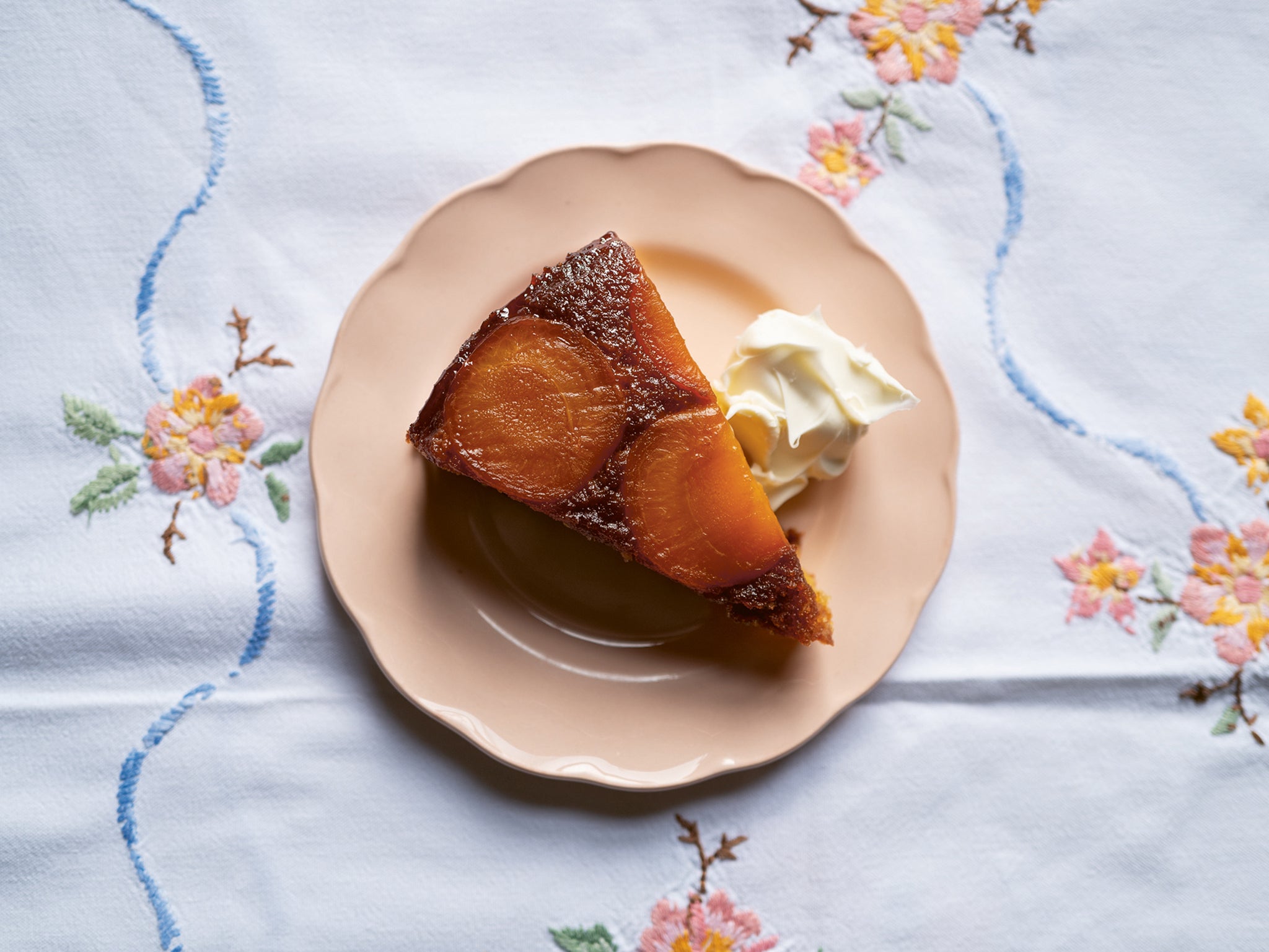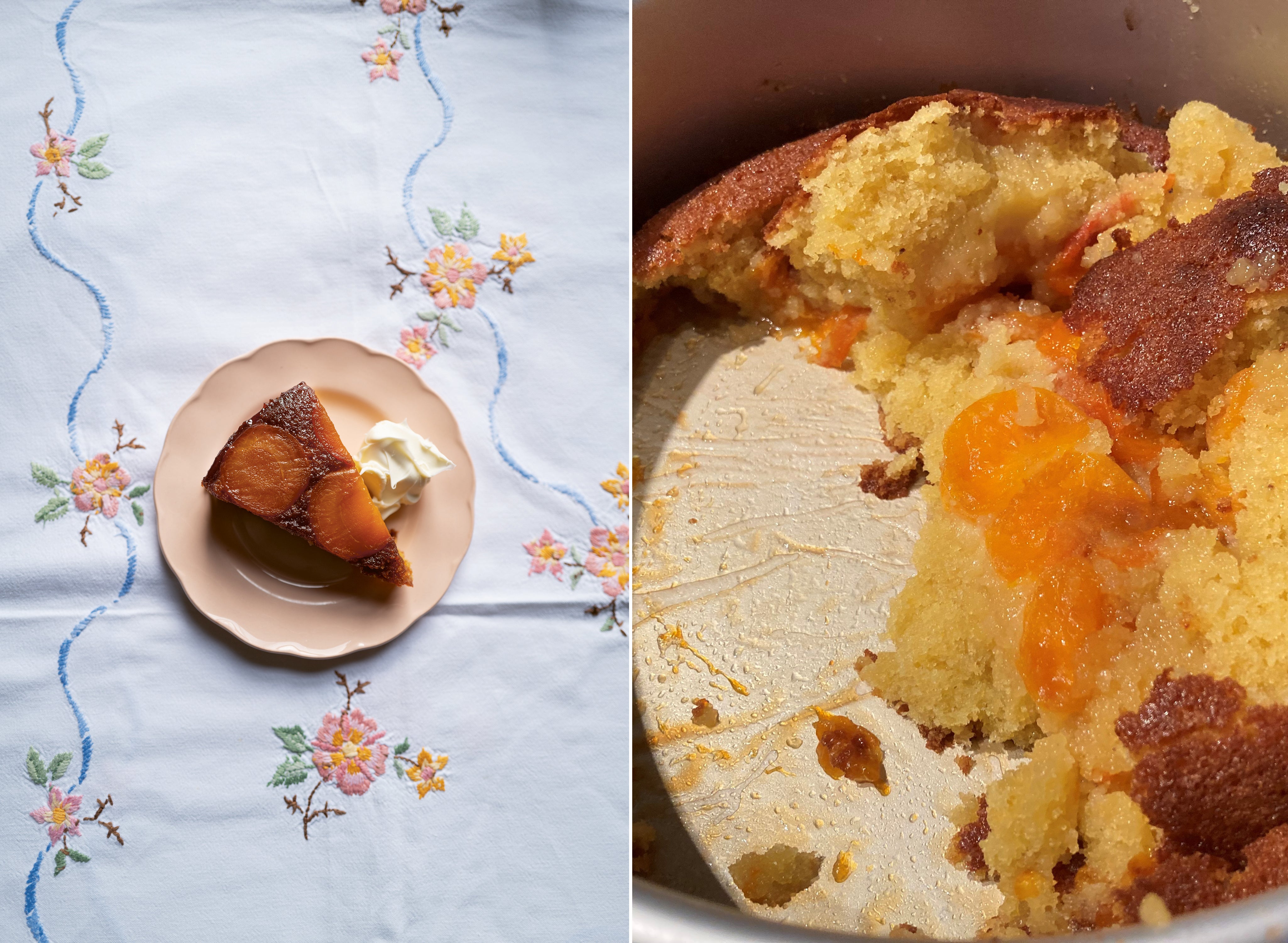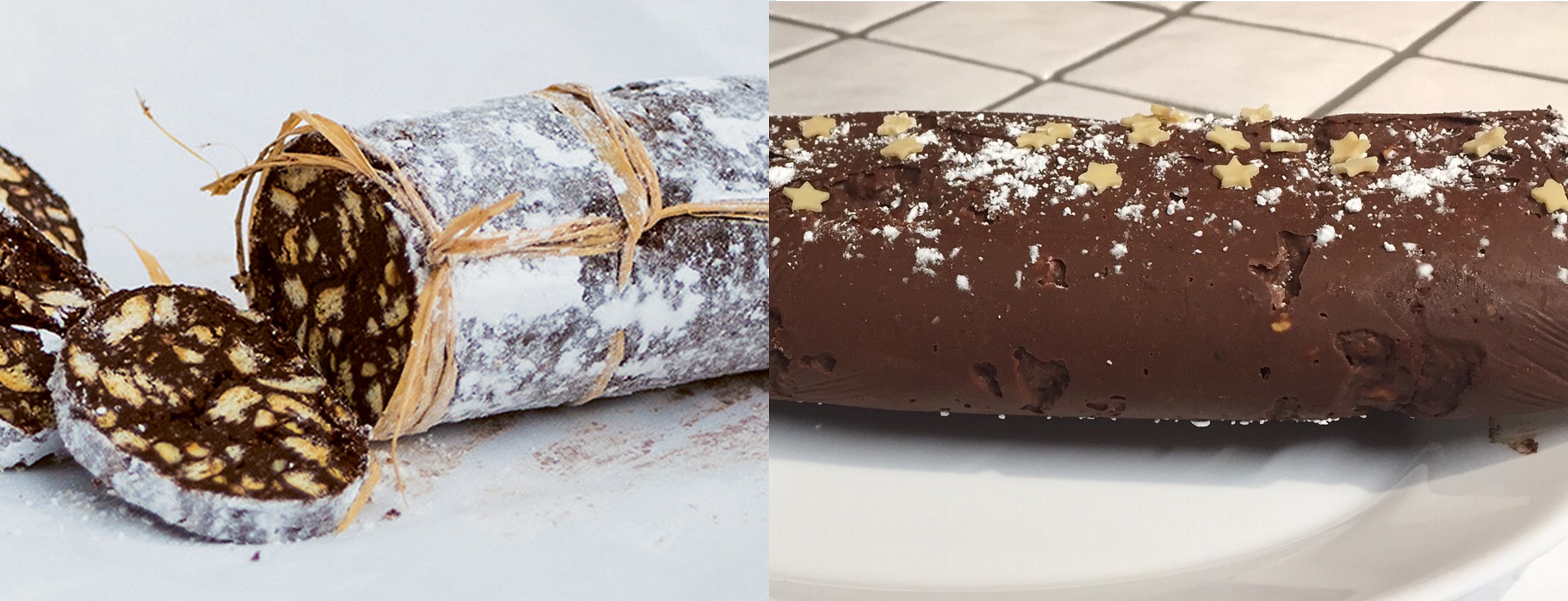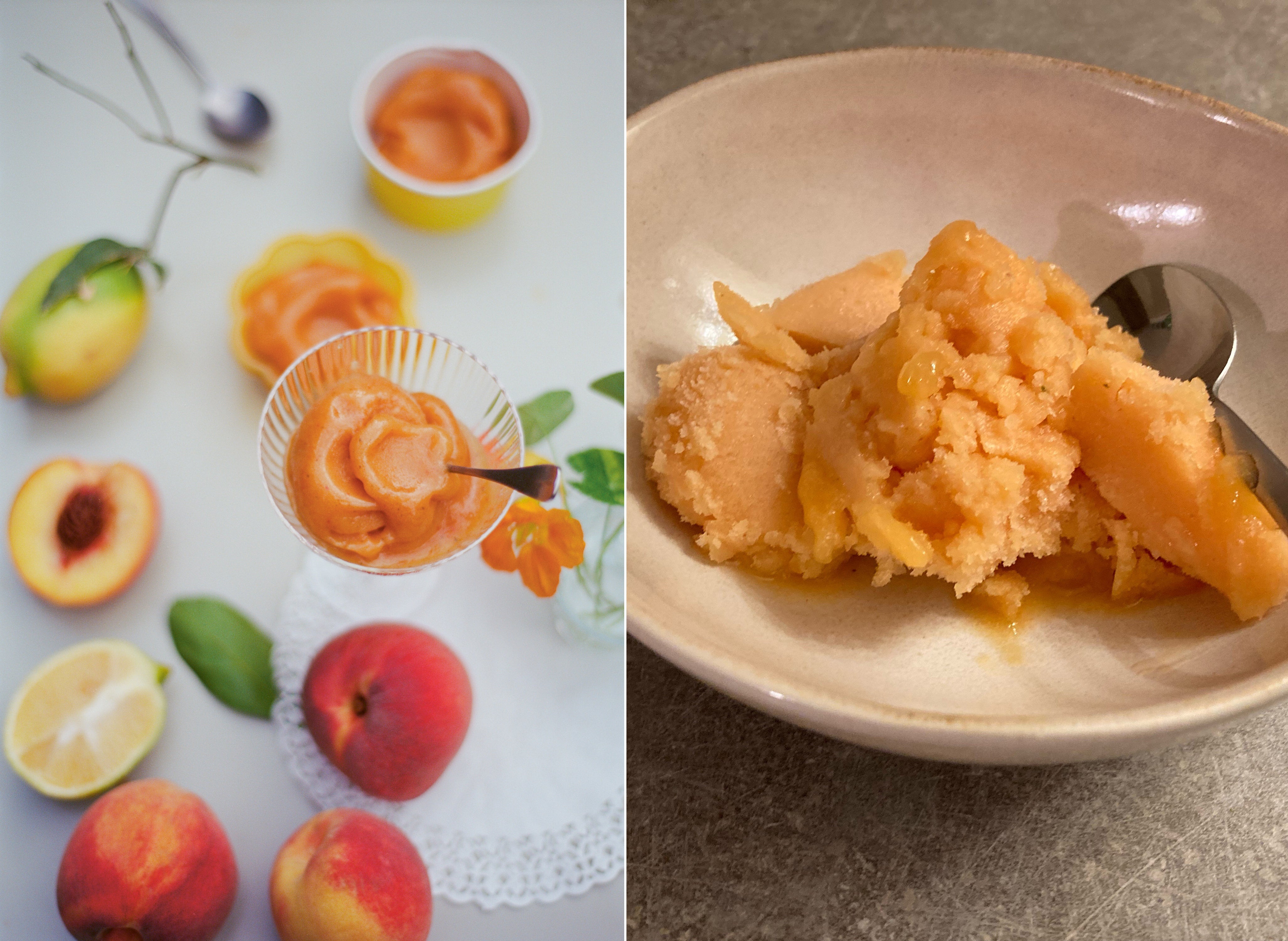The Independent's journalism is supported by our readers. When you purchase through links on our site, we may earn commission.
Three Italian desserts to satisfy your holiday cravings
Ella Walker, Lisa Salmon and Prudence Wade try out three recipes from chef and food writer Letitia Clark’s new cookbook... but not all goes to plan

It doesn’t look like many of us are going to get to spend a long, lazy holiday in Italy this summer, eating ice-cream-stuffed brioche for breakfast, perfectly ripe peaches for lunch, and mountains of creamy, boozy tiramisu for dinner, ahem, dessert.
There’s still a slight sliver of hope, but if the anticipation is liable to leave you sad and restless, it might be wise to throw open your own kitchen windows, don a red and white checked apron, locate an Italian radio station on your phone, and capture a little continental charm right here.
We recommend grabbing a copy of England-born, Sicily-based food writer Letitia Clark’s new collection, La Vita è Dolce, dedicated solely to “Italian-inspired desserts”. Gladly, we had a go at three recipes – a sponge, a chocolate fridge cake and a sorbet. Here’s what we learned…
Ella Walker tried: Caramelised apricot, almond and orange blossom upside-down cake

I shall admit upfront, I had a bit of a mare with this one. It began with ordering a new and unfamiliar pan (Clark specifies using one that is 23cm/9in and all of mine were too small), forgetting to grease said pan properly (in my defence, I baked on the hottest day of the year and my butter was in molten revolt), and then absolutely not getting the hang of caramel. Combine this with a poor flip-and-catch action, a lack of patience (did I mention how hot it was?) and the result is the shocking image you see above.
However, I will say that this higgledy-piggledy, very upside down upside-down cake was a triumph in taste, if not in structural integrity.
It all began so well. The sponge is a doddle. Spiked with orange blossom water – track a bottle down in Middle Eastern deli-shops or order online – the batter is laced with almonds and yoghurt, making it super light and, once all the fruit has soaked into it, suitably sweet, sodden and syrupy. The problems kicked in when I realised the recommended seven to eight apricots would not nearly be enough for the topping (I added in the segments of a satsuma that was on its last legs), followed by two attempts at making caramel. The first go, the sugar wouldn’t caramelise, it just bubbled mockingly at me. The second batch eventually started to change colour, but I panicked because it was sticking to the sides of the pan and whacked it in the cake tin too soon, where it crystallized palely. I hoped for the best and shoved the lot in the oven for 45 minutes regardless.
It was on its re-emergence that I flipped it and the whole middle of the cake leapt into a jumble… there was no rescuing the look of it, but it was ridiculously good eaten straight from the tin, or later for breakfast with a dollop of yoghurt. Next time, I solemnly swear to grease the pan.
Caramelised apricot upside-down cake recipe, with almond and orange blossom

Serves: 8-10
Ingredients
For the apricots:
15g butter, plus extra for greasing
7-8 apricots
140g sugar
60ml (4 tbsp) water
1 tbsp lemon juice (use the same lemon for the zest)
For the cake:
175g butter, softened, plus extra to grease
175g caster (superfine) sugar
A pinch of sea salt
Zest of 1 lemon
3 eggs
100g 00 or plain (all-purpose) flour
100g ground almonds (almond meal)
100ml yoghurt, plus extra to serve
2 tsp baking powder
1 tbsp orange blossom water
Mascarpone, to serve (optional)
Method
1. Grease a 23cm cake tin with butter and line with baking parchment. Preheat the oven to 180C (350F/gas 4).
2. Halve the apricots and remove the stones. Set aside.
3. Put the sugar and water in a saucepan and heat gently, swirling the pan rather than stirring to dissolve the sugar. Watch carefully until the mixture turns a light coffee colour, swirling occasionally to make sure the caramelisation is even. When the mixture is caramel coloured, remove from the heat.
4. Add the butter and turn the heat down to low, stirring until it all comes together. Add the lemon juice and stir well. You should now have a smooth caramel.
5. Pour the liquid caramel into the lined cake tin and smooth it out to form an even layer. Add the apricots, placing them close to each other, cut-side down.
6. For the cake, in a mixing bowl and using an electric mixer (or in the bowl of a stand mixer), cream the butter and sugar with the salt and lemon zest until pale and fluffy. Beat in the eggs, one by one, until incorporated. Add the flour and the ground almonds and mix again. Finally add the yoghurt, baking powder and the orange blossom water. Stir to form a smooth batter, then ladle into the prepared tin.
7. Smooth the top, then bake in the oven for 45-50 minutes, until golden and risen. Allow to cool for a few minutes before inverting onto a serving plate. Serve with yoghurt or a blob of mascarpone.
Note: If you can’t find apricots or they aren’t in season, you can use tinned ones, which work surprisingly well.
Lisa Salmon tried: Chocolate hazelnut and sour cherry salame

I picked this recipe for two main reasons. One, it sounded like something my kids would love, and two, it looked easy to make. I was right on both counts.
Often when you’re following a recipe, the preparation can be far more time-consuming than anticipated, but in this case there was no hidden fiddly-ness: crushing the biscuits and roasted hazelnuts with a rolling pin was quick and easy, and I was glad Clark pointed out the biscuit pieces needed to be larger than just crumbs, or I almost certainly would have over-bashed my Hobnobs.
Mixing the sugar, butter and eggs together with an electric mixer was also unproblematic, and all you do then is stir in the chocolate, cocoa, fruit and nuts and you’re ready to roll, literally. Even hand-rolling the mixture in cling-film was easy (and quite satisfying). And Clark is quite right, the salame you’re left with is obscenely large (but neither I nor the kids were complaining).
Our verdict on the chocolate salame? Delicious. Clark does suggest adding a splash of booze to the mixture, and if I make it again I’ll definitely be popping in a glug of rum or Amaretto, for extra deliciousness.
Chocolate hazelnut and sour cherry salame recipe

Makes: 1 almost obscenely large salame, or two modest salami
Ingredients
80g hazelnuts
200g biscuits (Rich Tea or another simple, dry, not-too-sweet biscuit)
250g dark chocolate (at least 70% cocoa solids)
150g butter (at room temperature)
120g caster (superfine) sugar
Pinch of salt
2 eggs, beaten
1 tbsp cocoa (unsweetened chocolate) powder
80g dried cherries (you can substitute cranberries or any other fruit you wish)Icing (confectioner’s) sugar, for dusting
Method
1. Preheat the oven to 170C (340F/gas 3). Lay the hazelnuts over the base of a baking sheet. Toast them in the oven for 10 minutes or so until lightly golden. Remove and set aside to cool, then roughly chop (or crush them briefly with the bottom of a rolling pin).
2. Break up the biscuits by putting them in a bag and bashing them with a rolling pin or by blitzing them quickly in a food processor. It is important they stay in fairly large pieces – you’re not aiming for crumbs.
3. Melt the chocolate in a small heatproof bowl set over a pan of gently simmering water (or in a microwave). Allow it to cool for a few minutes.
4. Beat the butter, sugar and salt in a mixing bowl using an electric mixer until smooth and creamy. Whisk in the beaten eggs, a little at a time, to form a smooth batter. Add the cocoa powder and the cooled, melted chocolate. Add the broken biscuits and the dried cherries and stir well to combine. Add the hazelnuts and stir again.
5. Scoop the mixture out (it will look quite sticky at this stage) onto a rectangle of clingfilm, aiming for a sort of long oblong shape. Place another piece of clingfilm the same size over the top and wrap the sausage completely. Roll it in your hands to smooth out the shape and then twist the ends. Place it in the fridge to chill.
6. Once solid and nicely firm, unsheath your sausage and dust in icing sugar, and either wrap it in baking parchment if giving it as a gift or, if you want to go the whole hog, tie it up as you would a proper salami. There are some very instructive videos on YouTube about how to tie salami properly, if you are so inclined. Will keep for up to one week, covered, in the fridge.
Note: I use Oro biscuits, which are the Italian equivalent of Rich Teas. If you want to make this fancy, you can use Amaretti. Digestives, Hob Nobs, any kind of basic biscuit will work, really, perhaps just steer clear of pink wafers. Ginger biscuits are also nice.
Prudence Wade tried: Peach and basil sorbet

Few things are more refreshing than a cool sorbet on a sticky, hot summer’s day. We were having blistering weather, so I thought it was high time to try this delicious-sounding peach and basil recipe – but obviously, I cracked out my ice-cream machine on the day it suddenly started pouring with rain. I persevered regardless (all in the name of sorbet) – and am glad I did.
While you can’t go wrong with classic lemon sorbet, peach transports you to Tuscany, and the hint of basil is a delightful background note (and not overpowering, as I worried it might be). The recipe itself is simple – all you have to do is make a sugar syrup, add the basil, and pour it over some macerated peaches. Once that’s infused for a few hours, you sieve the mixture and pour it into an ice cream machine.
In just 15 minutes, I had sorbet that tasted fully professional – sweet and absolutely satisfying, even if it wasn’t quite the weather for it. It’s easy if you have an ice-cream machine, and even though Clark gives directions for how to make it without the expensive kit, that really would be more of a faff.
Peach and basil sorbet recipe

Makes: 1 litre
Ingredients
200g sugar
100ml water
20 leaves of fresh basil, washed, patted dry and torn (one bunch should easily supply this many)
750g very ripe peaches
Zest and juice of 2 lemons
Method
1. Bring the sugar and water to the boil in a small saucepan. Allow to simmer for one minute (swirl the pan to make sure the sugar has melted but do not stir). Once you have a clear, shiny, thick syrup, remove from the heat. Drop in the basil leaves, then decant the syrup into a glass jug or bowl to cool. Cover.
2. Cut the peaches into chunks and macerate them with the lemon zest and lemon juice. (I just peel this in strips with a swivel peeler here as everything will be blitzed and strained eventually but you can finely zest it if you prefer.)
3. When the syrup has cooled, pour it over the peaches and leave the whole lot to infuse for a few hours at room temperature (or covered in the fridge overnight).
4. Blend everything (leaves, zest and peach flesh) in a blender until you have a smooth purée.
5. Sieve the mixture, discarding the bits of basil left behind in the sieve, making sure to press the pulp to extract all the flavours and juices.
6. Transfer to an ice cream machine and churn according to the manufacturer’s instructions. Store in an airtight container.
Recipes extracted from ‘La Vita è Dolce’ by Letitia Clark (Hardie Grant, £26; photography by Charlotte Bland)
Join our commenting forum
Join thought-provoking conversations, follow other Independent readers and see their replies
Comments
Bookmark popover
Removed from bookmarks